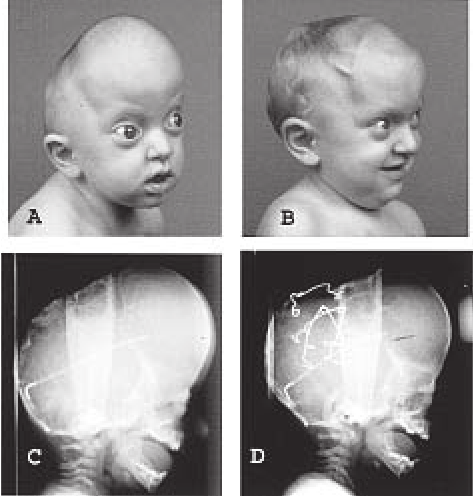Table of Contents
Introduction
Crouzon syndrome is a genetic condition categorized as one of the most common forms of craniosynostosis—a disorder characterized by the premature fusion of cranial sutures. This congenital anomaly leads to distinctive physical features, particularly affecting the skull and face. While Crouzon syndrome is primarily recognized for its craniofacial manifestations, it also poses significant neurological risks, necessitating early intervention. In this article, we will delve into the details of Crouzon syndrome, including its causes, symptoms, diagnosis, and management.
What Is Crouzon Syndrome?
Crouzon syndrome is an autosomal dominant condition, meaning it can be inherited from just one affected parent. The genetic mutation responsible for this syndrome typically occurs in the FGFR2 (Fibroblast Growth Factor Receptor 2) gene, which plays a crucial role in bone development. The effects of this mutation lead to the early closure of cranial sutures, resulting in various craniofacial abnormalities.
Key Characteristics:
- Premature Fusion of Cranial Sutures: The skull bones fuse too early, restricting the growth of the skull and leading to an abnormal shape.
- Mid-Face Hypoplasia: This condition results in underdevelopment of the mid-face, causing a distinctive facial profile.
- Shallow Orbits and Proptosis: The eye sockets (orbits) become shallower, leading to protruding eyes (proptosis).
Symptoms and Associated Conditions
Individuals with Crouzon syndrome present with several defining characteristics, both facial and neurological. Recognizing these symptoms early is crucial for appropriate management.
* Craniofacial Anomalies:
- Prominent forehead
- Abnormal shaping of the head
- Underdeveloped upper jaw
*Ocular Issues:
- Protruding eyes
- Potential risk of blindness due to increased pressure on the optic nerves
*Neurodevelopmental Concerns:
- Intracranial pressure resulting from a restricted brain growth may lead to cognitive impairments.
Due to the physical and neurological implications of Crouzon syndrome, early diagnosis and intervention are crucial for enhancing the quality of life for affected individuals.
Diagnosis of Crouzon Syndrome
Diagnosing Crouzon syndrome typically involves several steps, utilizing both clinical evaluation and imaging techniques.
- Clinical Examination: A qualified healthcare professional assesses physical features, including head shape and facial structure.
- Genetic Testing: Confirmatory tests for mutations in the FGFR2 gene can provide a definitive diagnosis.
- Imaging Studies: X-rays or CT scans may reveal the characteristic "beaten copper skull" appearance, indicating cranial suture fusion.
These diagnostic tools are essential for not only confirming the presence of Crouzon syndrome but also for planning potential interventions.
4. Management and Treatment
The treatment of Crouzon syndrome is primarily focused on addressing craniofacial deformities and preventing neurological complications. Early craniofacial surgery is often recommended.
Treatment Options Include
1. Craniofacial Surgery:
- Surgical techniques may be employed to correct skull shape, relieve intracranial pressure, and improve facial symmetry.
2. Orthodontic Treatment:
- As the child grows, orthodontic intervention may be necessary to manage dental issues arising from jaw malformation.
3. Ophthalmological Care:
- Regular eye examinations are vital to monitor and address vision problems stemming from proptosis.
While surgical intervention can transform physical appearance and enhance brain development, ongoing multidisciplinary care is essential to address the associated intellectual and developmental challenges.
Conclusion
Crouzon syndrome is a complex genetic condition that has significant implications for both craniofacial structure and neurological health. Early diagnosis and surgical intervention are pivotal in managing the symptoms effectively. With appropriate care, individuals with Crouzon syndrome can experience improved quality of life and developmental outcomes. Ongoing research and awareness are crucial to advancing our understanding of this condition, ultimately paving the way for better management strategies and improved care. The journey for families dealing with Crouzon syndrome can be challenging, but with modern medical advancements, there is hope for achieving favorable results.
Tags
syndromes





